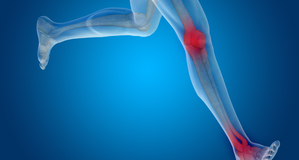Stroke Rehabilitation and Neuroplasticity: Efficacy and Methods Available
By
2012, Vol. 4 No. 05 | pg. 1/2 | »
IN THIS ARTICLE
KEYWORDS
A stroke is defined by the Stroke Association as a ‘brain attack’, where part of the brain is deprived of oxygen. It is also known as a ‘cerebrovascular accident’ (CVA). There are two types of strokes: ischaemic and haemorrhagic (The Stroke Association, n.d.). Ischaemic strokes are caused by thrombi, whereas a haemorrhagic stroke is often caused when an artery bursts due to increased pressure in the artery, or if there is a weakness in the arterial wall. The blood seeps into other areas and causes more damage. Normally this is considered the most dangerous type of stroke, for it is more difficult to locate a bleed than a clot. Strokes result in significant morbidity rates. Pharmacological, behavioral, and cognitive methods are available for the rehabilitation of stroke patients. Pharmacological measures target secondary prevention, as the risk of recurrence after a preliminary stroke is high (NICE 2008). The behavioral measures mainly comprise of lifestyle changes (i.e. quitting smoking, changes in diet, exercise). Cognitive rehabilitation involves aiding the brain’s reorganization of basic cognitive functions that have been affected. This can include speech therapy for aphasia, physical therapy to aid the improvement of impaired motor functions, and memory aids to aid with memory impairment. Neuroplasticity is the ability of the brain to reorganize its neural pathways, whether it be from learning or from brain damage. It is the general term for processes such as neurogenesis, sprouting, axonal regrowth and denervation super-sensitivity. In the context of strokes, neurogenesis occurs when a post-stroke patient re-learns to carry out basic tasks. This is aided by cognitive stimulation. Neuroplasticity involves cellular and molecular changes.Pharmacological MethodsThe pharmacological methods of rehabilitation for a post-stroke patient comprise mainly of secondary preventative measures. For example, anti-thrombotic treatments such as aspirin are used in the cases of patients who have had ischaemic strokes (NICE Guidelines, 2008). By thinning the blood, the chances of an ischaemic stroke are significantly reduced, as the chances of forming a blood clot are decreased. However, for patients with a history of haemorrhagic strokes, these treatments are contraindicated, as the risk of a recurrent haemorrhagic stroke would be increased. Other pharmacological methods are lipid-lowering therapies. Hyperlipidaemia (raised lipid levels) is a well-known risk factor for increased chances of an ischaemic stroke (NICE guidelines, 2008). To prevent a recurrent stroke, statins and other lipid-lowering agents are used to lower lipid levels, especially cholesterol (NICE guidelines, 2008). These are not recommended for patients with a history of haemorrhagic strokes, as the mechanisms between an ischaemic and haemorrhagic stroke are different. Anti-smoking pharmacological aids are also utilized for rehabilitation, as a preventative measure (NICE guidelines, 2008). Smoking is extremely detrimental to the cerebrovascular and cardiovascular systems. It is a known risk factor for increasing the chances of an ischaemic stroke whilst slowing the recovery processes. Post-stroke patients who smoke are encouraged to stop doing so. If the patient is able to stop smoking completely, the recovery process for them is accelerated. Currently, there are no drugs available to aid neuroplasticity processes in post-stroke patients. However, research is being undertaken to develop such drugs, such as noradrenergic and dopaminergic agents (Członkowska, A. & Leśniak, M., 2009), alongside biomaterials that promote brain protection, repair and regeneration (Font, M.A.,Arboix, A., &Krupinski, J., 2010). Some recently developed biomaterials can assist the target delivery of drugs or therapeutic proteins to the brain. These enable and facilitate cell or tissue transplants to occur, which can help rebuild damaged neural circuits. Behavioral MethodsBehavioral rehabilitation involves several lifestyle changes. Post-stroke patients are advised to stop smoking, take up exercise and limit alcohol intake, as well as make changes to their diet. With regards to dietary changes, the NICE guidelines (2008) suggest that an optimum diet that consists of five portions of fruit and vegetables a day, alongside two portions of fish a week (one of them being oily) is recommended. Limiting the consumption of saturated fats and replacing them with polyunsaturated or monounsaturated fats is also an important recommended dietary change. This is to lower the level of Low-Density Lipids such as cholesterol, which can prove to be a risk factor for recurring strokes. Dietary changes can affect how rapidly neurogenesis and angiogenesis occur for post-stroke patients. Studies have shown that a high enough dose of omega-3 fatty acids (which can be found in oily fish and other sources) has beneficial effects on brain repair, as well as having benefits for general brain health. (NICE Guidelines, 2008; Belayev et al, 2010; Higdon, J, 2005). Exercise is necessary to promote weight loss for patients who are overweight or obese, and also to increase muscular activity. Weight loss through exercise and a change in diet decreases the risk of recurrence of a stroke, as obesity with hyperlipidaemia is a risk factor for a recurrence. Previous studies have demonstrated that physical therapy and exercise have beneficial physiological, psychological, sensorimotor, strength, endurance, and functional effects (Gordon, N.F. et al, 2004). Alongside this, exercise is one of the main ways in which a post-stroke patient can reduce their risk of developing cardiovascular disease, which in turn reduces the chances of myocardial infarction (NICE guidelines, 2008). Exercise also helps build up muscular strength and also improve motor functions for post-stroke patients. Setting goals for post-stroke patients undergoing rehabilitation is an important behavioral measure. This will help set long-term and short-term milestones for recovery, which can facilitate rehabilitation in a psychologically positive way (The Stroke Association, n.d.; Albert, S. J. & Kesselring, J., 2011; NICE Guidelines, 2008). Of these behavioral changes, exercise has one of the most significant effects on neuroplasticity. Studies have shown that exercise can have substantial benefits for brain reorganization, for it stimulates the connections in the CNS (Central Nervous System). Rehabilitating exercise aids motor skill improvement after a stroke, which is fundamental as it helps the brain and CNS forge new neural pathways and connections. This facilitates the processes involved in neural plasticity (Johansson, B.B., 2011; Cauraugh, J.H. & Summers, J.J., 2005). Cognitive RehabilitationCognitive rehabilitation is vital for post-stroke patients, whether it be a recovery from an ischaemic or haemorrhagic stroke. Cognitive rehabilitation focuses on the recovery of functions such as memory, attention, motor skills, as well as other functions. It is (arguably) the most important for stimulating neuroplasticity processes in post-stroke patients due to its direct effects on the cognitive areas in the brain. For post-stroke patients with speech impairment such as aphasia or dysarthria, regular speech therapy sessions are essential for helping patients achieve a better quality of life. A speech and language therapist (SALT) will be responsible for assessing the severity of the damage done. Various therapy sessions will focus on the specific cause of the aphasia, and a therapy program will be specifically constructed for the individual. (NICE Guidelines, 2008). Some patients may develop problems swallowing (dysphagia), and specialist rehabilitative input is required to improve this (NICE Guidelines, 2008). Mental practice is the term given to practicing activities and movements ‘in the mind’, and it has been used in athletes. More recently, studies have shown that it can also be used on stroke patients, who visualize motor movements through mental imagery, alongside other cognitive-based treatments. It has been suggested that patients should be taught to mentally visualize and practice an activity alongside other conventional treatments in order to improve motor functions, especially arm movement (NICE Guidelines, 2008; Johansson, B.B., 2011). Virtual reality has also been used to improve motor movements alongside balance (Johansson, B.B., 2011; Jack, D. et al, 2001).Continued on Next Page » Suggested Reading from Inquiries Journal
Inquiries Journal provides undergraduate and graduate students around the world a platform for the wide dissemination of academic work over a range of core disciplines. Representing the work of students from hundreds of institutions around the globe, Inquiries Journal's large database of academic articles is completely free. Learn more | Blog | Submit Latest in Health Science |


















